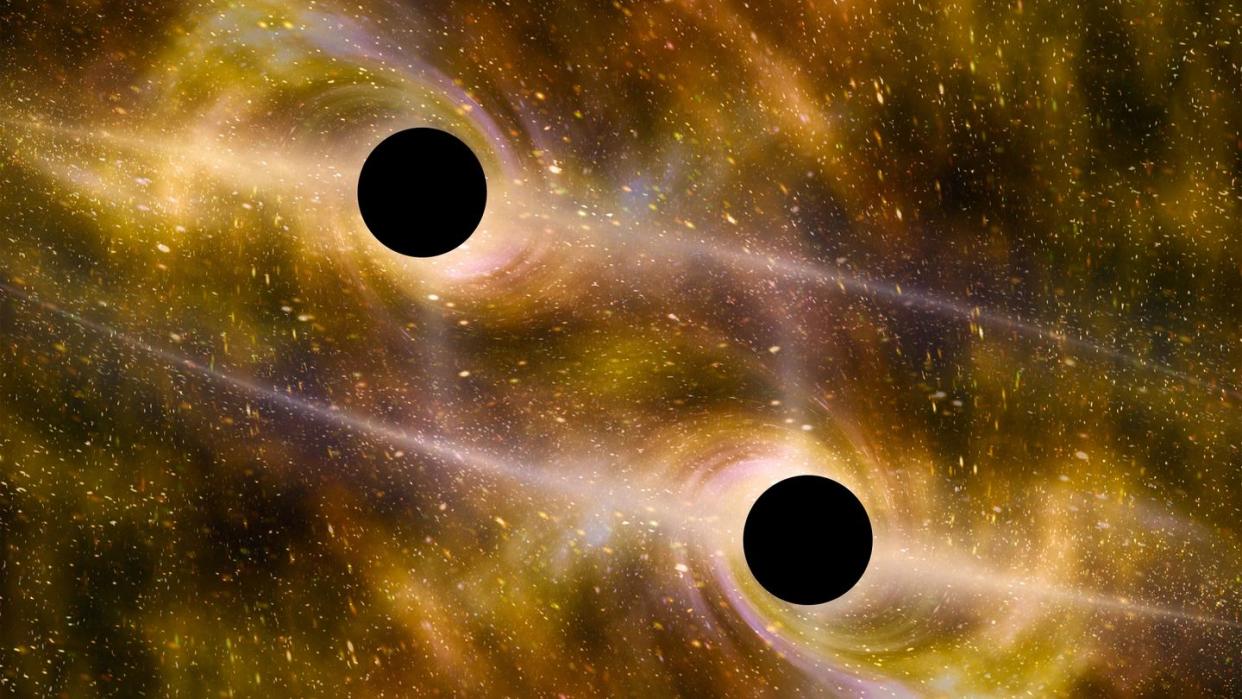Scientists Found the Speed Limit of Merging Black Holes

"Hearst Magazines and Yahoo may earn commission or revenue on some items through these links."
When two black holes collide, the resulting larger black hole can blast off at high speeds due to recoil.
To figure out the limit of these speeds, scientists from the Rochester Institute of Technology (RIT) in New York ran 1,381 simulations of black hole mergers using several supercomputers.
The study discovered that, even in the most extreme cases, black holes ejected via recoil never exceeded speeds of 28,500 kilometers per second—about one-tenth the speed of light.
When two black holes barrel toward each other, they create the most extreme collisions in the known universe. The impacts are so immense that the resulting black hole can be blasted away by the energy of the recoil—and these black holes can really book it.
According to new research from scientists at the Rochester Institute of Technology (RIT) in New York, the speed limit of a black hole after one of these cataclysmic collisions holds firm at 28,500 kilometers per second—about 63 million mph, or about one-tenth the speed of light. At that speed, one could travel from the Earth to the Moon in just 13 seconds.
The results of this study were published earlier this month in the journal Physical Review Letters.
“We are just scratching the surface of something that could be a more universal description,” study co-author Carlos Lousto, a mathematics professor at RIT told Live Science, saying that such a limit could apply on an atomic level as well.
Two things can occur when black holes barrel toward each other—they can either merge (creating gravitational waves in the process) or be flung apart. What determines the outcome is how far apart the black holes are at their closest approach. With the help of the Laser Interferometer Gravitational-Wave Observatory, or LIGO, scientists have documented 100 or so black holes collisions. It was previously believed that black holes formed nearly circular orbits during mergers, but recent research confirmed that more eccentric (aka elliptical) orbits were possible.
Lousto, along with his colleague James Healy, wanted to find the upper limit of these eccentric orbits and discern the maximum speed a black hole could recoil from such a collision. To do this, the two scientists ran 1,381 supercomputer simulations with a variety of parameters like initial momentum, closest approach distance, and axial orientation. The simulations calculated the evolution of black holes and their interactions as determined by general relativity equations.
These simulations were so complex that it took two weeks to calculate each one. So, even with several supercomputers, the research still took years to complete. After finally compiling the simulations, Lousto and Healy discovered that no matter the properties of the original black holes, the final black hole never recoiled at a speed greater than 28,500 kilometers, or one-tenth the speed of light.
To reach this maximum speed, two black holes would need to be spinning on the same plane, but in opposite directions. Because of this specific requirement, it’s unlikely that LIGO or any other future science project will ever record such a collision.
So this is a true speed limit—not simply a suggestion that can be fudged when driving on the interstate.
You Might Also Like

